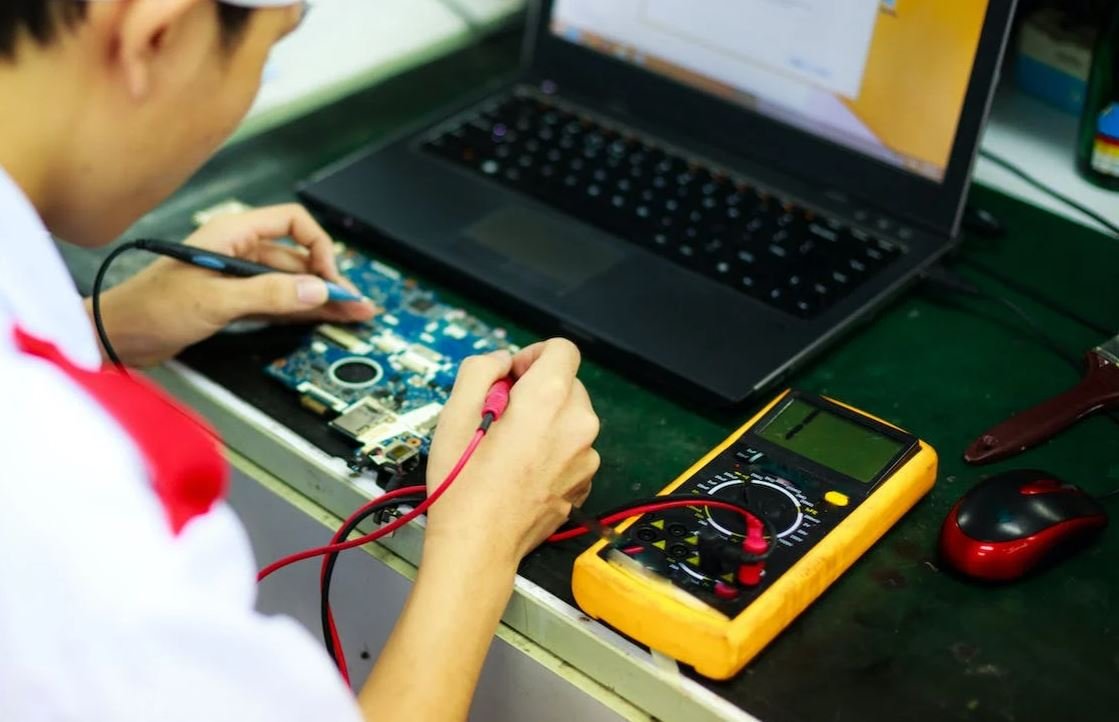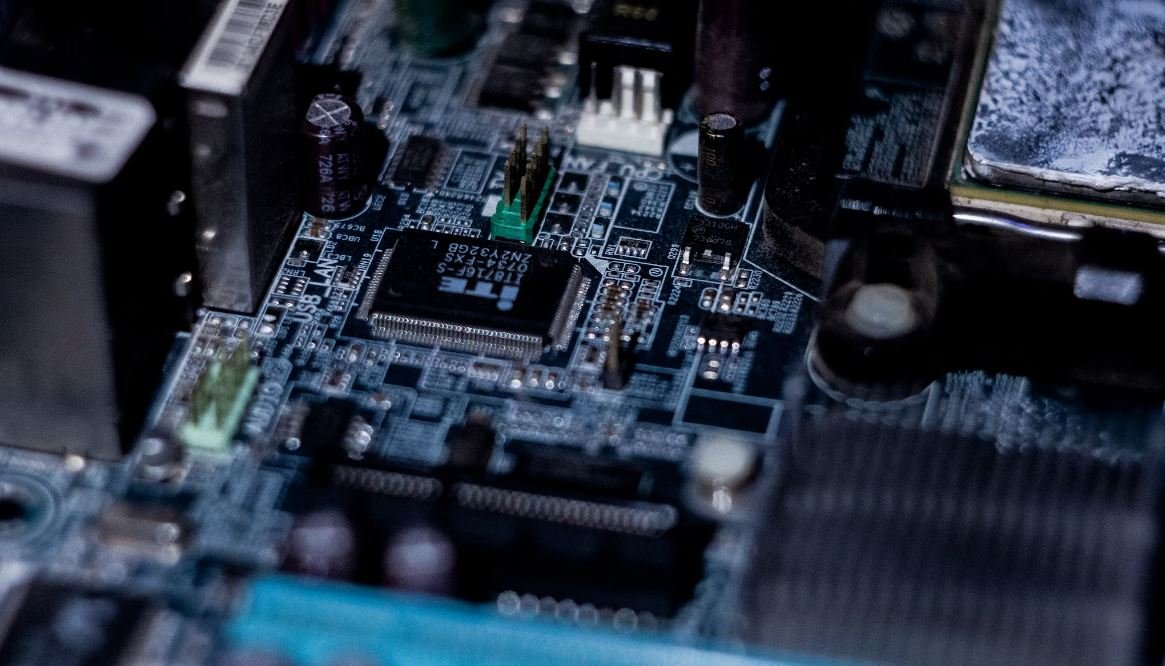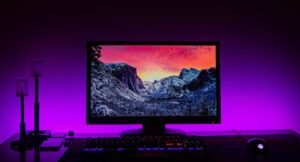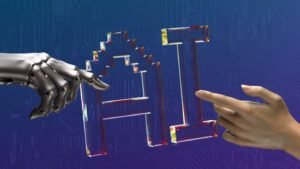Generative Art: How To
Generative art is an exciting and innovative form of creative expression that is generated through the use of algorithms and computer programming. Unlike traditional art, which is usually created by hand, generative art uses code to produce unique and constantly evolving compositions. This article will provide an overview of generative art and guide you through the process of creating your own generative artwork.
Key Takeaways:
- Generative art is created using algorithms and computer programming.
- Generative art is constantly evolving and unique.
- Creating generative art requires both programming skills and creativity.
Understanding Generative Art
Generative art is a form of creative expression that relies on algorithms and code to create unique visual or auditory outputs. The artist specifies a set of rules or parameters, and the computer program generates the artwork based on those rules. *Generative art challenges the traditional notion of a fixed artwork and allows for infinite possibilities and variations.*
Getting Started with Generative Art
To start creating generative art, you will need a basic understanding of programming concepts and access to a programming language or software. *Once you have the necessary tools, you can unleash your creativity and experiment with different algorithms and parameters to generate art that reflects your vision.*
Here are some steps to kickstart your journey into generative art:
- Choose a programming language or software: Popular options include Processing, Python, and JavaScript.
- Learn the basics of programming: Familiarize yourself with variables, loops, conditionals, and other fundamental concepts.
- Explore generative art libraries and frameworks: These resources provide pre-built functions and tools that can help simplify the coding process.
- Experiment with algorithms: Start with simple algorithms and gradually build upon them to create more complex and intricate artwork.
- Refine and iterate: Fine-tune your code and experiment with different parameters to refine your generative artwork.
Examples of Generative Art
Generative art can take on various forms, including visual art, music, poetry, and even dance. Below are three tables showcasing different examples of generative art:
Table 1: Visual Generative Art
| Artist | Description |
|---|---|
| Aaron Koblin | Creates stunning visualizations by transforming data into art. |
| Marius Watz | Produces intricate geometric patterns using algorithms and code. |
| Vera Molnár | Pioneer of computer-generated art, known for her algorithmic compositions. |
Table 2: Musical Generative Art
| Artist | Description |
|---|---|
| Brian Eno | Uses generative processes to create ambient music. |
| Alva Noto | Combines sound, light, and visual elements in his generative artworks. |
| Murcof | Blurs the boundaries between classical and electronic music through generative compositions. |
Table 3: Poetic Generative Art
| Artist | Description |
|---|---|
| Brion Gysin | Known for his “cut-up” technique, where he rearranges words to create poetry. |
| Jim Andrews | Creates interactive poetry presentations using generative algorithms. |
| Laurence Sterne | Author of the novel “The Life and Opinions of Tristram Shandy, Gentleman,” which utilizes techniques resembling generative writing. |
Generative Art in the Digital Age
In today’s digital age, generative art has gained significant popularity. Its ability to create unique and ever-evolving artworks resonates with the constantly changing nature of technology and our lives. *Generative art is not limited by physical constraints and can be easily shared and exhibited online, reaching a global audience.*
Whether you are an aspiring artist, a programmer looking for a creative outlet, or simply someone curious about exploring the intersection of technology and art, generative art offers an exciting and limitless world to discover.

Common Misconceptions – Generative Art
Misconception 1: Generative art lacks creativity
One common misconception about generative art is that it lacks creativity and artistic intent. In reality, generative art is created by using algorithms and rules to generate artwork that can be unpredictable and unique. The artist still plays a central role in setting the rules and parameters that govern the art’s creation.
- Generative art relies on creative coding techniques to produce visually interesting and innovative results.
- Artists have control over the algorithms and rules they design, allowing them to infuse their creative vision into the final artwork.
- Generative art encourages exploration and experimentation, leading to new artistic discoveries and possibilities.
Misconception 2: Generative art is created solely by computers
Another common misconception is that generative art is created solely by computers without any human involvement. While computers play a role in generating the art, human intervention is critical at multiple stages of the creative process.
- The generative art process typically involves designing and coding algorithms, which requires human creativity and expertise.
- Artists make deliberate decisions about the initial conditions, parameters, and aesthetics of the generative system.
- Human artists are responsible for selecting, curating, and refining the final output generated by the algorithms.
Misconception 3: Generative art is random and lacks intention
Some people believe that generative art is purely random and lacks artistic intention. While generative processes involve an element of chance, artists exert control over the algorithms to guide the outcome and achieve their artistic objectives.
- Artists make informed decisions in designing the rules and parameters that govern the generative system.
- Generative art allows artists to explore specific themes, concepts, and aesthetic qualities.
- Artists can refine and iterate on the generative processes to create meaningful and intentional artworks.
Misconception 4: Generative art is only for tech-savvy individuals
One misconception is that generative art is exclusively for those with advanced technical skills in coding or programming. While knowledge of coding can enhance the generative art process, it is not a prerequisite to creating and appreciating generative artworks.
- There is a range of user-friendly tools and software available that allow individuals with little to no coding experience to engage in generative art.
- Non-technical artists can collaborate with programmers to bring their artistic vision to life through generative processes.
- Generative art can be enjoyed and appreciated by anyone, regardless of their technical background.
Misconception 5: Generative art lacks originality
Another common misconception is that generative art lacks originality, as it is often produced using algorithms and predefined rules. However, the beauty of generative art lies in its potential to create countless unique and innovative artworks.
- Artists can modify and fine-tune algorithms, ensuring that each generative artwork is distinct and original.
- Generative art can produce unexpected and surprising results, making it a fertile ground for original artistic expression.
- The combination of artistic intention and algorithmic exploration allows generative art to break new ground and redefine traditional notions of originality.

Generative Art: How To Make the table VERY INTERESTING to read
Generative art refers to artwork that is created with the help of an autonomous system or algorithm. It involves using code or computer software to generate unpredictable and unique visual creations. In this article, we will explore various aspects of generative art, from famous artists in the field to the impact it has had in different domains.
1. Pioneers of Generative Art
Delve into the artists who played a crucial role in shaping the world of generative art.
| Artist | Nationality | Birth Year | Style |
|---|---|---|---|
| Vera Molnar | Hungarian | 1924 | Geometric Abstraction |
| Frieder Nake | German | 1938 | Computer Graphics |
| Manfred Mohr | German | 1938 | Algorithmic Art |
2. Generative Art in Music
Explore how generative art has transcended visual media and influenced the realm of music.
| Artist | Album | Year Released | Genre |
|---|---|---|---|
| Brian Eno | Music for Airports | 1978 | Ambient |
| Aphex Twin | Selected Ambient Works 85-92 | 1992 | Electronic |
| Iannis Xenakis | Metastasis | 1955 | Avant-Garde |
3. Generative Art in Architecture
Discover groundbreaking architectural projects that embrace the principles of generative art.
| Project | Architect | Location | Type |
|---|---|---|---|
| Seattle Central Library | Rem Koolhaas | Seattle, USA | Public Library |
| Beijing National Stadium | Herzog & de Meuron | Beijing, China | Olympic Stadium |
| Sagrada Familia | Antonio Gaudi | Barcelona, Spain | Basilica |
4. Notable Generative Art Exhibitions
Explore renowned exhibitions that showcase the diversity and essence of generative art.
| Exhibition | Year | Location | Curator |
|---|---|---|---|
| “Hello, World: Revising a Collection” | 2011 | Museum of Modern Art (MoMA), NYC | Jonathan P. Bowen |
| “Entangled: Threads & Making” | 2020 | Victoria and Albert Museum, London | Claire Wilcox |
| “Generative Unfoldings” | 2018 | ArtScience Museum, Singapore | Sheldon Brown |
5. Generative Art in Film
Discover how the film industry harnesses generative art to create stunning visual effects.
| Film | Director | Year Released | Genre |
|---|---|---|---|
| “Tron” | Steven Lisberger | 1982 | Science Fiction |
| “Blade Runner 2049” | Denis Villeneuve | 2017 | Science Fiction |
| “The Tree of Life” | Terrence Malick | 2011 | Drama |
6. Generative Art in Fashion
Witness how generative art has paved the way for innovative designs and fashion experiences.
| Designer | Collection | Year | Theme |
|---|---|---|---|
| Iris van Herpen | Synesthesia | 2012 | Interplay of the Senses |
| Alexander McQueen | Plato’s Atlantis | 2010 | Mythical Creatures & Evolution |
| Issey Miyake | 132 5. | 2010 | Origami-inspired |
7. Generative Art in Advertising
Explore advertisements that rely on generative art to captivate viewers and promote brands.
| Brand | Ad Campaign | Year | Medium |
|---|---|---|---|
| “Year in Search” | 2014 | Video Animation | |
| Nike | “Nike Free” | 2019 | Print & Digital |
| Apple | “Shot on iPhone” | 2016 | Photography |
8. Generative Art in Data Visualization
Discover how generative art enhances the understanding and presentation of complex data.
| Project | Creator | Year | Data Focus |
|---|---|---|---|
| “Wind Map” | Fernanda Viégas & Martin Wattenberg | 2012 | Real-Time Wind Data |
| “The Atlas of Biological Rhythms” | José Luis Vicente & Isabel Nepomuceno | 2019 | Circadian Rhythms |
| “Flight Patterns” | Aaron Koblin | 2005 | Air Traffic |
9. Generative Art in Video Games
Dive into video games that utilize generative art techniques to create immersive digital worlds.
| Game | Developer | Year Released | Genre |
|---|---|---|---|
| “No Man’s Sky” | Hello Games | 2016 | Exploration/Survival |
| “Minecraft” | Mojang Studios | 2011 | Sandbox |
| “Proteus” | Ed Key & David Kanaga | 2013 | Exploration |
10. Generative Art in Virtual Reality
Witness how generative art evolves and immerses users through virtual reality experiences.
| Experience | Creator | Year | Platform |
|---|---|---|---|
| “Tripp” | Android Jones | 2019 | Oculus Rift |
| “The Night Café” | Mac Cauley | 2015 | HTC Vive |
| “Tilt Brush” | 2016 | Oculus Quest |
Conclusion
Generative art has revolutionized various creative fields, from visual arts to music, film, fashion, and even data visualization. By harnessing the power of algorithms and autonomous systems, artists and innovators have been able to push the boundaries of creativity and generate captivating and unpredictable works. From the pioneers of the field to the modern-day applications, generative art continues to inspire and shape the way we perceive and interact with art.
Frequently Asked Questions
Generative Art
What is generative art?
What are some common techniques used in generative art?
What software or programming languages are commonly used in generative art?
Can anyone create generative art?
Is generative art considered a legitimate form of artistic expression?
Can generative art be considered interactive?
Can generative art be reproducible?
Where can generative art be exhibited or showcased?
Are there any legal considerations for using generative art in commercial projects?
Can generative art be created in real-time?




